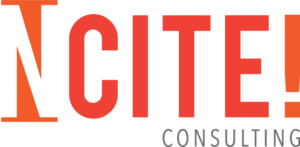In my last post, we questioned if strategic plans were necessary because they’re usually left to collect digital dust. I provided several examples of how important strategic planning is, even for organizations that haven’t had success following them in the past. But today, I want to go a step further. Today, I want to tell you how to incorporate your strategic plan into daily activities so all that work isn’t left in the cloud.
After all, aligning strategic goals with daily activities is key to putting the document to use.
Ready?
Let’s do this.
Remember those huge Post-it notes teachers would hang in their classrooms? The ones they usually pulled out for group presentations? Well, last I checked there’s no hard rule saying those are only for kids. Visual aids around goals are useful in the office because they remind everyone what they’re working toward. These reminders can motivate a team and have them reevaluate their daily tasks. Of course, if you’re not a fan of Post-it notes, the standard whiteboard can work, too!
Outside of visual aids, the weekly staff meeting agenda should always include an update on the strategic plan. Staff should be aware of which goals the organization has crossed off, how far they have to go (about any hard deadlines), challenges they may have encountered, and any success stories. Presenting this information at a staff meeting gives everyone the chance to ask or answer questions and ensures everyone is on the same page. This time should also be used to determine if certain work no longer fits the larger strategic plan and what to do with that work.
So far in this post, I’ve mentioned an organization’s staff several times. Other key players in aligning strategic goals with daily activities are managers and supervisors. Sure, there’s a level of self-accountability in every position, but part of a manager’s job is keeping their team on track. Managers should be involved in strategic planning at a high level so they can delegate smaller tasks to the appropriate team members. They should also provide support to their team when needed to continue meeting deadlines and goals. Remember, no matter the time of year, people take vacations, get sick, have children, or just need time off.
My final tip for aligning strategic goals with daily activities is simple.
Print out the strategic plan.
We live in a digital world, but there’s something very comforting about holding a hard copy in your hand. I understand strategic plans can change (and they’re kind of meant to), but having the document on the staff table or lounge where it can be easily referenced or discussed ensures your team never forgets what they’re working toward.
If you’re interested in developing a strategic plan for you and your staff, schedule a free 30-minute consultation with me to see how I can support your mission. You’re not in this alone!


